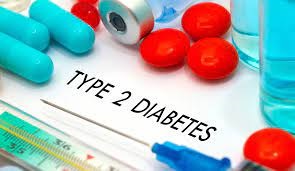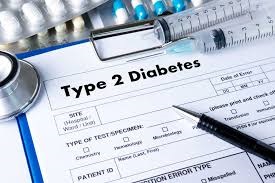No products in the cart.

Diabetes Type-2 and its Meal Planning

What is type 2 diabetes?
Diabetes Type-2 and its Meal Planning: The leading cause of type 2, the most prevalent form of diabetes, is high blood glucose levels, often known as blood sugar. To keep going, your body relies on blood glucose, mostly from the food you eat. The pancreas releases the hormone insulin to aid glucose uptake by cells, providing your body with a steady supply of usable fuel. Those with type 2 diabetes either don’t produce enough insulin or cannot effectively use the insulin they produce. That’s not good since it implies your cells aren’t taking in the glucose they need, and it’s building up in your blood instead.
You are aware of the significance of meal planning if you have diabetes. However, what foods are best to eat if you have diabetes? It might be challenging to prepare meals when you have type 2 diabetes. Our goal is to assist you.
This blog post will cover some general advice for meal planning with diabetes. Additionally, we’ll provide you with a list of mouthwatering diabetic-friendly recipes to get you started.
Diabetes Mellitus:
High blood sugar levels are a hallmark of the disease known as diabetes mellitus. There are a few distinct forms of diabetes.
Type 1:
For those with type 1 diabetes, the immune system attacks and kills off their insulin-making cells. In most cases, this form of diabetes first appears in adolescence. Type 1 diabetics typically require insulin treatment.
Type 2:
The majority of those who have diabetes have type 2. Adults are more likely to be affected, and obesity is a common cause. Reduced insulin production is a hallmark of type 2 diabetes. Type-2 diabetes is easily controlled via dietary, physical, and pharmaceutical measures.
Gestational Diabetes:
During pregnancy, some women acquire a condition called gestational diabetes.
- Meal planning is essential for people with type 2 diabetes to control their blood sugar and avoid diabetic ketoacidosis. If you have diabetes, you should follow a diet low in sugar and saturated and Trans fats. People with diabetes can choose from various meal plans that aim to improve the patient’s ability to maintain healthy blood sugar levels.
- Meal preparation might be simplified by consulting a list of foods suitable for people with diabetes. Utilize this checklist to organize your diet and ensure you get all the essential elements. A diabetic diet plan can be another helpful tool for simplifying the process of putting up healthy meals. If you follow this approach, you will be better able to restrict your food intake and make healthier decisions.
- Making a plan for the week’s meals can be helpful for some people. If you follow this advice, you can guarantee that you eat healthily and get all the nutrients you need.
Helpful hints for people with diabetes:
Several measures can be taken to lessen the burden of following a diabetic diet.
Follow these suggestions while arranging your weekly meals:
Go for high-fiber foods. People with diabetes can benefit from eating more fiber-rich foods since it reduces how quickly their blood sugar levels rise. Beans, vegetables, whole grains, and fruits are all excellent sources of fiber.
Avoid high cholesterol and saturated fat. Saturated fat and cholesterol contribute to high blood cholesterol and impair insulin function.
Get your protein from lean sources. Meals high in lean protein, such as chicken, fish, and tofu, can help you feel full and satisfied while eating fewer calories. A steady supply of protein in the diet can reduce the risk of diabetic ketoacidosis.
Eat a diet that contains healthy fats. Avocados, almonds, and seeds are foods high in healthy fats that can aid with glucose regulation.
Keep hydrated by drinking lots of water. Keeping hydrated and facilitating the body’s use of sugar are two of water’s many benefits.
Stay away from sugary sodas. Drinking carbonated soft drinks, energy drinks, coffee, or tea that has been sweetened might cause a spike in blood sugar.
Perform regular physical activity. When you work out, your body makes better use of insulin. The time spent on meal preparation is well worth it. By adhering to such a diet, one can keep their blood sugar levels under control and enjoy optimal health.
Observing these guidelines can help you stay on track with your diabetes diet and keep your blood sugar under control.
Diabetes-Friendly Diets:
Always advise diabetes patients to follow one of several different diet regimens. The Mediterranean diet and the Dash diet.
Eating on a Dash:
Fruits, vegetables, whole grains, and low-fat dairy products are the backbone of the Dash diet. You can also add lean meats, fish, nuts, and seeds to this category. The Dash eating plan restricts your sugar, salt, and bad fats intake.
The Benefits of the Mediterranean Diet
Olive oil, fish, nuts, and whole grains are just a few examples of the nutritious foods that make up the Mediterranean Diet. Cardiovascular and blood sugar levels have both benefited from the Mediterranean diet.
Both diets likely to reduce blood sugar levels and aid in preventing or postponing diabetes.
If you have type-2 diabetes, it’s important to know what foods you should stay away from:
Individuals with type 2 diabetes have impaired insulin function. In other words, this creates a spike in blood sugar. To keep your blood sugar levels stable, monitoring your diet and avoiding foods that cause a spike is important.
Processed Sugars and Starches:
White bread and pasta are examples of refined carbs. Also, you van find them in other sweets like cookies, cake, and candy. Blood sugar levels spike rapidly after consuming refined carbohydrates. That’s why it’s crucial to keep them within reasonable bounds.
Cholesterol-Inducing Saturated Fats:
Foods high in saturated fats include animal products and dairy. They can also be found in various vegetable oils, such as coconut oil. Saturated fats are associated with increased cholesterol and an impaired response to insulin. That’s why people with Diabetes should steer clear of them.
“Trans Fats”
Products like margarine and vegetable oil that have been treated include trans fats. In addition, they can be found in various ready-to-eat and baked items. Trans fats have been linked to an increase in cholesterol and an impaired response to insulin in the body. That’s why people with Diabetes should steer clear of them.
Empty Calories:
Candies, cookies, and cakes all include simple sugars. Some fruit juices and sports drinks may also include them. Your blood sugar will increase after consuming simple sweets in a short time. That’s why people with Diabetes should steer clear of them.
Type 2 Diabetes and Dietary Interventions:
Obviously, This is a simple one-day meal plan. Therefore, consult a certified dietician if you desire a tailored food plan.
Breakfast:
- We have one hard-boiled egg and half a small avocado on a piece of bran bread.
- One orange as well.
Lunch:
The salad comprises one small whole wheat pita pocket, one cucumber, one tomato, half a cup of lentils, half a cup of leafy green vegetables, and salad dressing.
Dinner:
Veggie tomato sauce with garlic, mushrooms, and greens; one cup of cooked pasta; two ounces of little chicken pieces.
Type 2 Diabetes Meal Prep: Frequently Asked Questions:
Q: In regards to type 2 diabetes, what is the optimal diet?
Ans: Unfortunately, there is no “ideal” diet for type 2 diabetics. Since everyone is different, it’s important to experiment with various diets until you find one that suits you.
Hence, Type 2 diabetics should priorities eating lots of vegetables and fruits, lean protein, whole grains, and healthy fats in their diet.
Q: Exactly how does one go about organizing their meals?
Ans: Obviously, One good place to begin is by completely accounting for your weekly food intake. The next step is to examine your timetable to determine the times of day when you are available to prepare meals. Meal preparation can then begin. Batch cooking or preparing certain meals in advance might be handy for having something ready during the week.
Q: What foods should I avoid if I have type 2 diabetes?
Ans: So, Avoiding processed foods, sugary beverages, and foods high in saturated and trans fats is a good rule of thumb. These foods have increased blood sugar levels and subsequent weight gain.
Q: Additional suggestions for controlling type 2 diabetes management are welcome.
Hence, You can better control your type 2 diabetes by taking additional steps beyond meal planning. These include, but are not limited to, engaging in regular physical activity, keeping close tabs on your blood sugar levels, and taking prescribed medicine as directed.
Conclusion:
In conclusion, careful meal preparation is essential for diabetes people. Various diet programs are available, so it’s crucial to pick the one that works best for you. Fresh fruits and vegetables, whole grains, lean meats, and healthy fats are all essential components of a nutritious diet for a person with type 2 diabetes. It would help if you also went to a nutritionist or dietitian to ensure you’re receiving enough of the right things.



